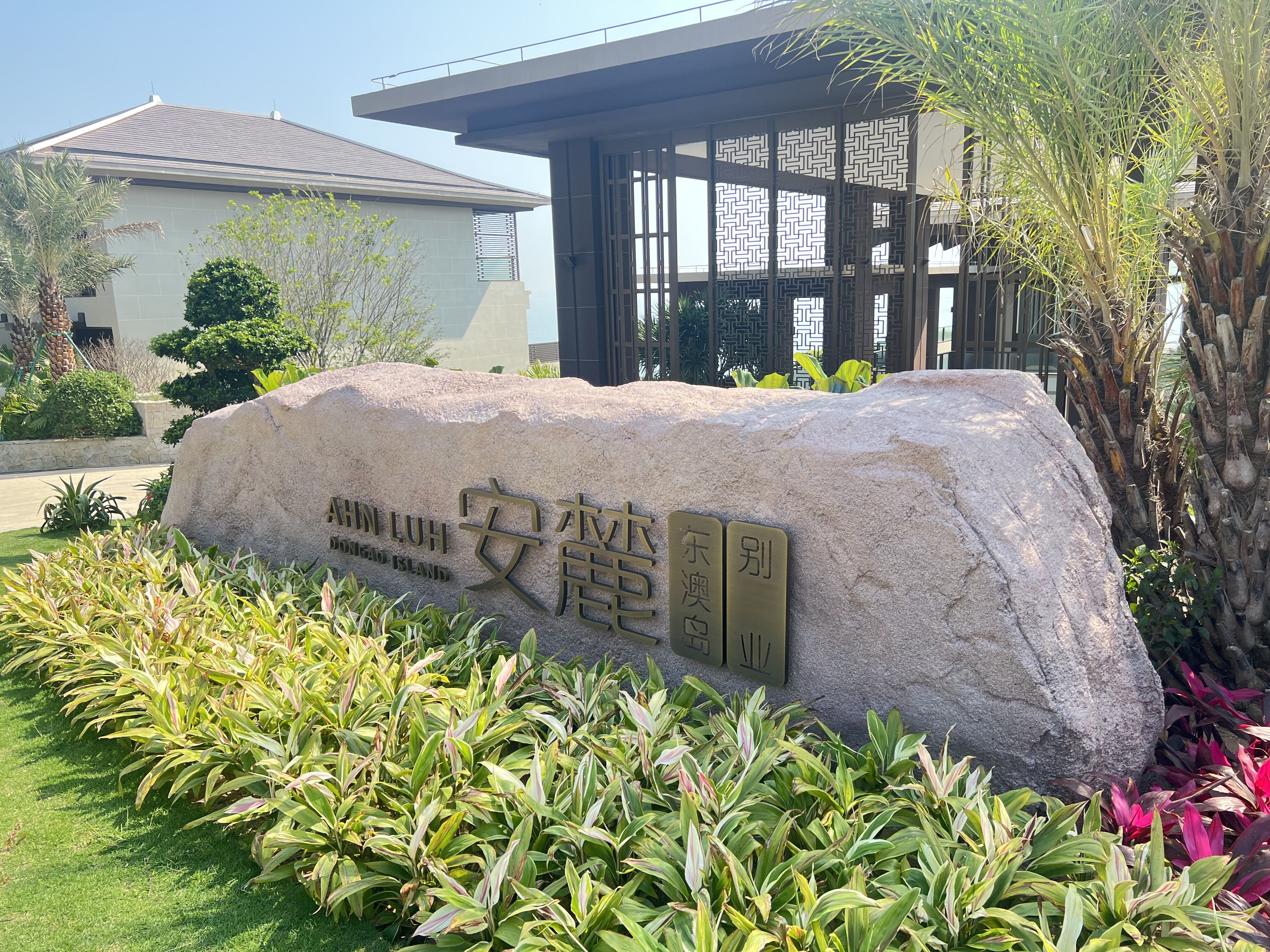Understanding the Role and Types of Hotel Signs
Hotel signage functions as both a practical navigation aid and a silent ambassador of brand identity. Exterior signs such as illuminated entrance marquees and parking wayfinders guide guests before arrival, while interior elements like lobby directories and elevator decals ensure seamless movement within complex layouts.
Common types of hotel signage: exterior and interior options
Exterior signs typically use weather-resistant aluminum or acrylic to endure UV exposure and temperature extremes. Indoors, lightweight PVC and vinyl graphics offer affordable, clear solutions for restroom labels, room numbers, and promotional displays without compromising legibility.
How directional, restaurant, and event signs enhance guest experience
Strategic placement of directional signage reduces lobby congestion by 40%, according to recent hospitality studies. Digital menu boards in restaurants boost upsell opportunities by 18%. For conference hotels, customizable wayfinding systems help attendees navigate large spaces efficiently, improving satisfaction during events.
The impact of hotel signage on brand perception and design cohesion
A unified signage system using consistent typography and color schemes can elevate perceived property quality by 32% (Hospitality Design Index 2024). In contrast, mismatched fonts or outdated designs create cognitive dissonance — 61% of travelers report distrusting hotels with poorly maintained exterior signs, based on a 2023 travel industry survey.
Budget-Friendly Materials for Durable and Attractive Hotel Signs
Comparing PVC, Acrylic, and Aluminum for Hotel Signage: Cost vs. Durability
Hotels can balance cost and durability by selecting materials suited to specific applications. PVC, acrylic, and aluminum represent a spectrum from economical to long-lasting:
| Material | Avg. Cost (4 sq.ft) | Weather Resistance | Best Use Case |
|---|---|---|---|
| PVC | $22—$35 | Low | Indoor directional |
| Acrylic | $45—$75 | Moderate | Lobby/restaurant |
| Aluminum | $85—$130 | High | Exterior wayfinding |
PVC provides low upfront costs but requires replacement every 18—24 months in high-traffic areas. Aluminum, though 3—4x more expensive initially, remains readable outdoors for 8—10 years, making it ideal for long-term investments.
PVC Signs for Indoor Use: Lightweight, Affordable, and Versatile
PVC delivers 72% cost savings compared to acrylic for interior uses. Its flexibility supports curved designs for elevator directories or restroom markers. Hotels often pair PVC with vinyl overlays for seasonal promotions or frequently updated event signage.
Aluminum for Weather-Resistant Exterior Hotel Signs
Anodized aluminum withstands UV radiation, extreme temperatures (-40°F to 120°F), and coastal salt air — making it essential for resorts and extended-stay properties. For durability, 0.08" thickness suits mild climates, while 0.125" is recommended in hurricane-prone zones. Brushed finishes also better resist scratches from maintenance equipment than glossy surfaces.
Acrylic Signage: Balancing Aesthetics and Mid-Range Pricing
With 92% light transmission — comparable to glass — 3/16" cast acrylic creates premium illuminated signs at 40% lower cost than LED-lit metal alternatives. Frosted edges and precision-cut lettering (minimum 1.5" height) allow midscale hotels to achieve a luxury aesthetic. However, UV-protective coatings are necessary for poolside or south-facing installations.
Achieving a Premium Look Affordably With Di-Noc Architectural Laminate
This pressure-sensitive film replicates materials like teak or brushed bronze at 15—20% of the cost when applied to MDF or acrylic substrates. A 2023 case study found hotels saved $3,800 per installation by using Di-Noc wraps instead of solid metal fabrication. It lasts 5—7 years indoors before needing replacement.
Low-Cost Signage Alternatives: Temporary and Flexible Solutions
Vinyl Signage for Seasonal Promotions and Short-Term Messaging
Vinyl banners that stand up to weather conditions typically run anywhere from 40 to 60 percent cheaper than those permanent sign options, which makes sense when businesses need something temporary like updating pool hours, running holiday sales, or directing traffic around construction zones. These banners generally last outdoors between two and five years, so companies can rotate them seasonally without constantly replacing signage. A retail chain somewhere in the Midwest actually saw their customer interaction jump by about 23 percent when they switched from digital displays to these vinyl window graphics during special promotions. The difference was noticeable enough that many stores are now reconsidering their approach to temporary advertising solutions.
Wall Graphics as Scalable, Removable Branding for Hotels
Wall murals that just stick on and peel off are changing how we decorate spaces at a fraction of the cost. Installation expenses drop around 70% when compared to those fancy engraved signs. These murals tell brand stories great in hotel lobbies, help people find their way through newly remodeled sections, and add some flair to boring hallways. The best part? They don't damage walls because they have this special backing material. That means businesses can change them out every year without having to repaint everything. Take luxury hotels for instance most of them (about two thirds) update their wall graphics annually while only about half stick with old fashioned permanent signage.
Paper and Plastic Signs for Functional Uses Like Housekeeping and Alerts
Laminated paper and plastic signs serve ultra-temporary needs at $0.25—$1.50 each. Common uses include:
- Room occupancy alerts (plastic door hangers)
- Breakfast hour reminders (table tents)
- Maintenance notifications (adhesive door signs)
A 150-room hotel can equip all rooms with custom plastic “Do Not Disturb” signs for under $180 — 83% cheaper than acrylic versions. When designed with high-contrast text, these meet ADA compliance standards.
These flexible solutions enable clear communication during renovations, seasonal shifts, and promotions without straining budgets.
Design and Customization Strategies to Reduce Hotel Sign Costs
Using Modular Designs and Reusable Templates to Cut Design Expenses
Modular systems reduce initial sign costs by 20—35% compared to fully custom designs (2023 hospitality benchmarks). Standardized templates for room numbers, directories, and amenities allow hotels to:
- Replicate designs across multiple properties without new graphic fees
- Bulk-order materials like aluminum or acrylic panels
- Simplify updates during renovations by replacing individual modules
| Design Approach | Avg. Cost per Sign | Lifespan | Brand Flexibility |
|---|---|---|---|
| Full Customization | $220—$450 | 7—10 yrs | High |
| Modular System | $90—$160 | 5—8 yrs | Medium |
Digital Mockups and Visualization Tools to Minimize Redesigns
Over 60% of hospitality designers now use 3D rendering software to finalize placements before production, reducing physical prototypes by 40% (Hospitality Tech Report 2024). Cloud-based platforms enable real-time collaboration between hoteliers and fabricators, helping catch visibility issues or measurement errors during virtual walkthroughs.
Balancing Minimalist Design with Strong Brand Visibility
Five key principles maintain brand presence while controlling costs:
- Color schemes: Limit to 2—3 brand-aligned hues
- Typography: Use one primary font across all signage
- Iconography: Adopt standardized symbols for amenities and parking
- Material consistency: Match existing interior finishes
- Strategic illumination: Use LED spotlights rather than full backlighting
Customization on a Budget: Maintaining Identity Without Overspending
Hotels personalize branding through targeted investments:
- Cast metal logos at key touchpoints (lobbies, elevators)
- QR codes in directory signs for dynamic content updates
- Seasonal vinyl overlays on permanent sign bases
One 150-room hotel cut rebranding costs by 32% by retaining existing structures and updating only digital content and decorative elements, according to a 2023 hospitality case study.
Evaluating Long-Term Value: Cost Breakdown and ROI of Hotel Signage
Typical cost breakdown by material, size, lighting, and installation
Signage costs vary widely. Aluminum exterior signs average $35—$75 per square foot, including professional installation ($150—$300). Indoor PVC options range from $12—$40/sq ft and are often DIY-friendly. Illuminated signs increase budgets by 40—60%, with LED-lit versions commanding a premium over neon or backlit alternatives.
LED vs. non-lit signs: Energy efficiency and maintenance costs
LED signs deliver 72% energy savings over fluorescent lighting (EnergyStar 2023) and last 50,000—100,000 hours. A recent hospitality study found properties reduced annual maintenance costs by $1,200 — $2,800 after switching to LED lobby signage. Non-illuminated acrylic signs require bulb replacements every 6—12 months at $85—$150 per service call.
Total cost of ownership: Maintenance and replacement frequency
Durability directly affects long-term expenses:
- Aluminum: 10—15 year lifespan, $80—$200 annual cleaning
- PVC: 3—5 year replacement cycle, $25—$60/year for UV coatings
- Acrylic: 7—10 year durability, $120—$300/year for anti-scratch treatments
Properties in coastal regions face 23% higher maintenance due to salt corrosion (Hospitality Design Report 2024).
Case Study: Budget-friendly rebranding with mixed-material signage in a mid-scale hotel
A 120-room hotel achieved 31% cost savings by combining aluminum exterior wayfinding ($8,200), PVC restaurant markers ($1,950), and vinyl promotional decals ($420). This hybrid approach preserved brand cohesion while keeping five-year replacement costs under $3,100—compared to $11,500 for all-aluminum signage.
Comparing ROI across sign types to maximize long-term value
Key ROI drivers include:
- Wayfinding signage: 18—34 month payback through reduced staff assistance
- Digital menu boards: 22% average increase in food and beverage upsells (Hospitality Tech ROI Index)
- Illuminated exterior signs: 19% higher nighttime walk-ins versus non-lit alternatives
Hotels using modular systems report 40% faster rebranding cycles than those with fixed designs.
FAQ
What materials are best for outdoor hotel signage?
Aluminum is considered the best for outdoor signs due to its high weather resistance and durability, lasting up to 8-10 years.
How can hotels reduce signage costs while maintaining quality?
Hotels can reduce costs by using modular designs, reusable templates, and cost-effective materials like PVC or Di-Noc laminates, maintaining quality without overspending.
What are some budget-friendly signage options for temporary needs?
For temporary solutions, vinyl banners, wall graphics, and laminated paper or plastic signs are affordable and effective.
What is the impact of hotel signage on guest experience?
Properly placed signs improve navigation and reduce congestion by 40%, enhancing overall guest experience and satisfaction.
Table of Contents
- Understanding the Role and Types of Hotel Signs
-
Budget-Friendly Materials for Durable and Attractive Hotel Signs
- Comparing PVC, Acrylic, and Aluminum for Hotel Signage: Cost vs. Durability
- PVC Signs for Indoor Use: Lightweight, Affordable, and Versatile
- Aluminum for Weather-Resistant Exterior Hotel Signs
- Acrylic Signage: Balancing Aesthetics and Mid-Range Pricing
- Achieving a Premium Look Affordably With Di-Noc Architectural Laminate
- Low-Cost Signage Alternatives: Temporary and Flexible Solutions
- Design and Customization Strategies to Reduce Hotel Sign Costs
-
Evaluating Long-Term Value: Cost Breakdown and ROI of Hotel Signage
- Typical cost breakdown by material, size, lighting, and installation
- LED vs. non-lit signs: Energy efficiency and maintenance costs
- Total cost of ownership: Maintenance and replacement frequency
- Case Study: Budget-friendly rebranding with mixed-material signage in a mid-scale hotel
- Comparing ROI across sign types to maximize long-term value
- FAQ

